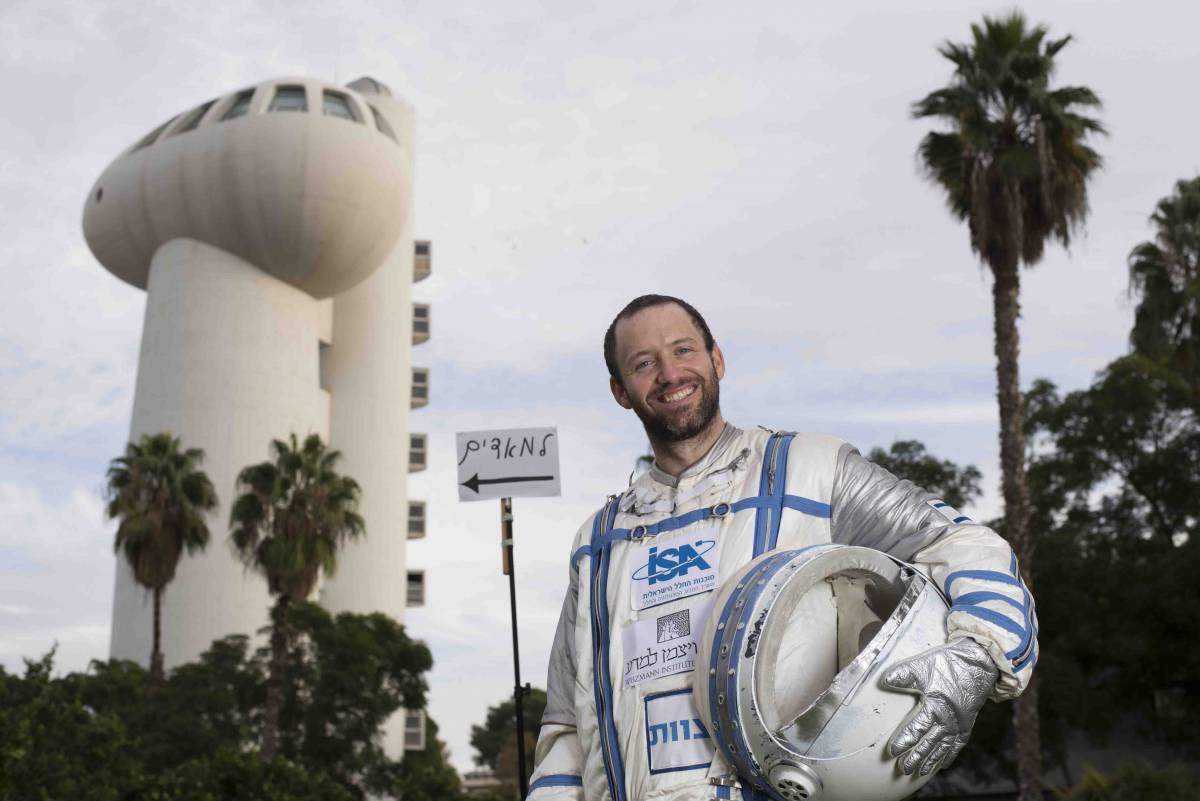Are you a journalist? Please sign up here for our press releases
Subscribe to our monthly newsletter:

For two weeks at the end of January, Weizmann Institute of Science research student Roy Naor will be living in a simulation of a Mars Research station. Naor, who will be representing the Israel Space Agency, and a team from five other countries will be in an isolated “capsule” in the Utah desert, carrying out studies similar to those that humans might conduct, in the future, on Mars.
The Mars Desert Research Station is run by the Mars Society; in the 172 team “missions” executed so far, members work in the arid, Mars-like environment to develop new technologies and gain insight into how humans will live on Mars. In the present mission, in addition to Naor will be the head of SOSA, the Slovakian Space Agency, a French mechanical engineer, an aeronautics and space engineer from Spain, an Australian astrobiologist and an Irish artist.
Naor is a student in the group of Dr. Itay Halevy of the Weizmann Institute of Science’s Earth and Planetary Sciences Department. Among other topics, he has studied carbonate minerals, which have been found on Mars and could provide evidence for liquid water in the planet’s past. “Carbonates need flowing water to form, and if we can show that water once existed for a long period of time there, we lend support to the idea that life could once have arisen on Mars,” he says. At the station, Naor will sample and analyze the geology of the analogue environment and its vicinity, including bringing some samples back to the Weizmann lab for further analysis.
The team, among other things, will be investigating the possibility of using the local soil for the 3-D printing of building blocks for permanent structures on Mars. Naor will be participating in experiments to see if this material has the required strength and whether it can withstand the radiation on the surface of Mars.
To simulate living in a Mars station, the group will live together in cramped conditions, eating, working and sleeping in a single structure, with showers limited to once every three days. Going outside the station will only be done in groups, in full suits – including helmets and facsimile oxygen tanks. Fortunately, the suits designed for Mars are lighter and more flexible than those worn by astronauts today. Communication with “Earth” will take place once a day – with a delay of several minutes – and no cell phones are allowed. The team will also have to ration the food they bring with them to make it last the whole two weeks.
The Israel Space Agency is inviting the public to participate. People can vote on the “Israeli” food that Naor will bring with him to the Mars station, as well as on the Israeli music he should play for his team. Members of the public can also follow his “space log” on the Israel Space Agency Facebook page, and on the Weizmann Institute of Science Facebook page.